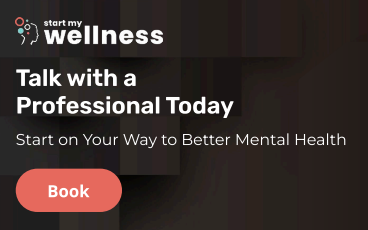Childhood memories can be persistent and carry negative beliefs that last a lifetime, growing into emotional complexes that prevent us from finding mental harmony. The healing process involves recognizing past traumas and unmet needs, requiring individuals to work through difficult situations from childhood and learn to nurture themselves with the same care they would show a child. This journey toward emotional wholeness creates a more stable emotional state and overall well-being.
Sometimes our inner child feels hurt or stuck in old patterns, influencing how we navigate relationships and challenges today. The self-healing journey isn’t always easy and takes courage to face old wounds, but healing the inner child can bring emotional wholeness and free us to live with more joy and authenticity. We must learn to listen to that quiet inner voice and rebuild trust in ourselves. This process fosters inner peace and self-compassion while leading to stronger, healthier connections with others. By exploring steps to nurture and heal childhood wounds, we can create more harmonious and fulfilling lives.
Understanding Childhood Trauma and Its Emotional Impact
Early childhood experiences leave deep impressions on our mental health and emotional development. While childhood experiences can be joyful and nurturing, painful experiences such as neglect, abuse, or emotional trauma can linger well into adulthood. These experiences significantly affect self-esteem, relationships, and overall emotional well-being. Emotional healing involves gently and compassionately addressing these wounds, offering comfort to the part of ourselves that still carries childhood pain.
How childhood trauma impacts us and why healing matters:
- Self-Esteem Issues: Trauma can make children feel worthless or unwanted. As adults, they may struggle with self-doubt or constantly seek validation from others.
- Emotional Triggers: Even minor situations can provoke intense reactions. A thoughtless comment might trigger old fears, causing childhood trauma to resurface as anxiety or anger.
- Trust Issues: Experiences of abandonment or betrayal in childhood create emotional barriers that make it difficult to trust others in future relationships.
- Relationship Challenges: Trauma can create fear of intimacy, causing some people to become overly clingy while others become emotionally distant and resistant to connection.
- Mental Health Impact: Untreated childhood trauma is strongly linked to depression, anxiety, PTSD, and other mental health conditions.
Mindfulness Practices for Deep Self-Discovery

Mindfulness serves as a gentle light that illuminates the quiet corners of our hearts where our inner child resides. Mindfulness practices help us reconnect with this tender part of ourselves, fostering self-discovery and emotional healing. These techniques ground us in the present moment and create space to listen to our emotions without judgment, like sitting with a younger version of ourselves and offering the kindness and patience we needed then. These practices guide us toward understanding who we are beneath the noise and demands of daily life.
How mindfulness supports self-discovery:
- Body Scan Meditation: Tune into your body’s sensations and notice where you hold tension or stress. This practice helps uncover buried emotions connected to past experiences.
- Breath Awareness: Spend five minutes focusing on your breath to calm the mind and allow your inner child’s feelings to surface gently and naturally.
- Intentional Journaling: Write freely about childhood memories and experiences. Ask yourself, “What did I need then?” to gain insights into your current emotional needs.
- Loving-Kindness Meditation: Send compassion to yourself as if you were comforting a child. Repeat affirmations like “I am enough” to nurture self-acceptance and healing.
- Mindful Play: Engage in creative activities like drawing, dancing, or playing music while letting go of the need for perfection. This reconnects you with childhood joy and spontaneity.
Self-Compassion as a Pathway to Emotional Healing
Self-compassion is like offering a warm embrace to your hurting heart, choosing kindness over self-criticism when life feels overwhelming. Treating yourself with gentleness paves the way for emotional healing, soothing old wounds and fostering personal growth. This means telling your inner child, “You’re okay just as you are,” and helping yourself recover from emotional pain with love rather than harsh judgment.
How self-compassion supports healing:
- Acknowledging Pain: Notice your struggles without judgment by simply saying, “This hurts,” to validate your feelings and experiences.
- Gentle Self-Talk: Challenge harsh self-criticism with gentle, supportive words. Speak to yourself as you would comfort a dear friend, saying things like “I’m doing my best.”
- Forgiving Mistakes: Release guilt about past errors and remind yourself that everyone makes mistakes as part of being human.
- Setting Healthy Boundaries: Protect your emotional energy by learning to say no when necessary, honoring your needs and building self-respect.
- Practicing Gratitude: Notice small joys and positive moments in your life to shift focus away from suffering toward hope and appreciation.
When you begin speaking gently to yourself after difficult days, you’ll feel emotionally lighter and experience greater inner peace. Self-compassion doesn’t erase emotional scars, but it helps you carry them with greater grace and acceptance. This approach serves as both a gentle and powerful tool for emotional healing, guiding you toward inner peace and deeper self-acceptance.
Embracing Growth and Wholeness Through Reflection
Healing your inner child is like patiently nurturing a young plant, allowing it to grow strong and healthy over time. Through mindful reflection, you weave self-knowledge into your daily life, significantly fostering personal growth and emotional development. This process involves tuning into that tender part of yourself, understanding its needs, and allowing your most authentic self to flourish. Each step in this journey is like offering a warm hug to your younger self, guiding you toward emotional wholeness and integration.
Strategies to cultivate emotional healing:
- Daily Mindfulness Practice: Take a few minutes each day to pause, breathe deeply, and check in with yourself emotionally. This helps you notice feelings connected to your inner child.
- Reflective Journaling: Write letters to your inner child weekly, asking questions like “How can I comfort you?” or “What do you need from me?” This deepens self-discovery and emotional connection.
- Building Safe Relationships: Surround yourself with supportive, understanding people who create space for your inner child to feel valued, accepted, and appreciated.
- Honoring Small Progress: Celebrate tiny moments of healing and growth, as each one strengthens your path toward personal development and emotional wellness.
- Rediscovering Play: Revisit enjoyable activities like drawing, exploring nature, or engaging in creative pursuits to spark lightness, joy, and healing.
The journey of healing your inner child is ongoing and requires patience, but it offers profound rewards in terms of emotional wholeness, self-acceptance, and the ability to form healthier relationships with yourself and others.




